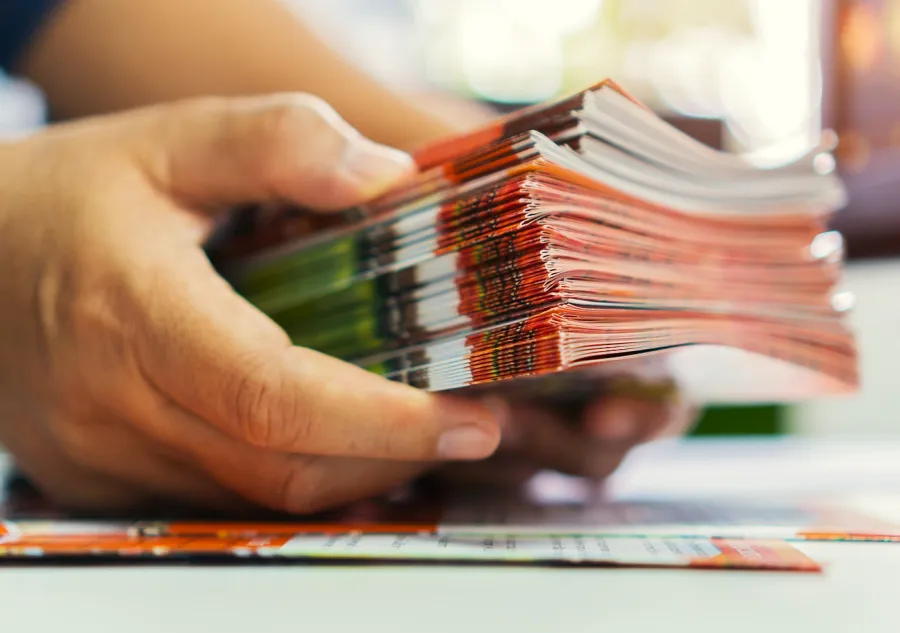In the fast-paced world of marketing, efficient strategies to print brochures for specific needs are essential. This article explores small quantity brochure printing, a convenient solution tailored for modern marketing demands.

Understanding Small Quantity Brochure Printing
Small quantity brochure printing is an innovative solution that caters to businesses and individuals requiring a limited number of brochures. Traditionally, large batch printing was the norm, often resulting in unused brochures and wasted resources. However, with the advent of digital printing technologies, small batches are now easily produced without compromising on quality.
The Benefits of Printing Small Quantities
For marketing professionals, small quantity printing offers numerous advantages. It allows for more personalized messaging and frequent content updates without the waste associated with large-scale orders. Additionally, it aids in budget management by minimizing waste and costs.
Who Can Benefit from This Printing Method?
From startups to large enterprises, any business looking for flexibility in marketing materials can benefit from this method. With the ability to test new markets, campaigns, or product launches, it provides a practical solution for dynamic business environments.
Choosing the Right Printing Services
Selecting the right printing service is crucial to ensure that the outcome meets your expectations. Researching providers that specialize in small runs can save time and resources. Look for services offering quality materials and a variety of finishing options to choose from.
Factors to Consider
Consider the type of paper, finishes, and turnaround time offered. Ensure that the printer uses modern equipment and technologies to deliver top-notch brochures. Additionally, reading reviews and testimonials can provide insight into the service reliability and quality.
Design Tips for Effective Brochures
To maximize the effectiveness of your brochures, attention to design is key. Focus on crafting a compelling visual message that reflects your brand and engages your audience.
Key Design Elements
Use high-quality images, consistent branding elements, and clear, persuasive content. Incorporate calls to action (CTAs) that guide readers towards the desired response. Additionally, consider interactive elements such as QR codes, leading to digital content.
Tools for Brochure Creation
Utilize design software like Adobe InDesign or Canva to create professional-looking brochures. These tools provide templates and design elements to help streamline the process for those with minimal design experience.
Printing Techniques: Digital vs. Offset
Understanding the differences between digital and offset printing can inform your decision-making process. Digital printing is more cost-effective for small runs, while offset printing may be suitable for larger quantities with specific color requirements.
Benefits of Digital Printing
Digital printing is ideal for its flexibility and speed. It allows easy customization, quick turnaround times, and is more cost-effective for small runs. Its the preferred choice for many businesses seeking small batch prints.
Offset Printing in Brochure Production
While more traditional, offset printing is best for precise color outcomes and larger quantities. Although not typically chosen for small runs, it still serves purposes where exact color matching is necessary.
Case Studies: Success Stories in Marketing
To illustrate the impact of small quantity printing, consider the success stories of businesses like small boutique shops or local events that effectively used this method to reach niche markets.
Practical Examples
For example, a local coffee shop wanted to test a new loyalty program. By printing a limited number of brochures, they attracted customers without overspending on unused materials. This strategy allowed them to refine offerings before a full-scale launch.
provides additional insights into brochure design and use cases.
Maximizing the Impact of Your Brochures
Even with small print runs, effectiveness depends on strategic placement and distribution. Identify key locations and events where your target audience will engage with the brochures. Utilize data analytics to guide distribution strategies.
Measuring Success
Track the success rate of brochures by monitoring metrics such as engagement and conversion rates. Utilize feedback to inform future iterations and improve subsequent print batches.
Innovative Distribution Ideas
Explore innovative ways to distribute brochures, such as pairing them with other marketing materials, handing them out at strategic events, or including brochure links in digital communications.
Future Trends in Brochure Printing
As technology evolves, anticipate new trends in brochure printing. Innovations in augmented reality (AR) and interactive print experiences could revolutionize how customers interact with printed materials.
Eco-Friendly Printing Options
With increasing environmental concerns, many companies are opting for green printing solutions. Utilizing recycled materials and soy-based inks demonstrates a commitment to sustainability while appealing to eco-conscious consumers.
Conclusion: The Importance of Adaptability
In conclusion, small quantity brochure printing offers versatility and efficiency for modern marketing professionals. By balancing cost, quality, and message customization, it provides an adaptable approach to align with evolving business needs.

FAQs
What is the advantage of digital printing for small quantities?
Digital printing allows for quick, efficient, and cost-effective production, ideally suited for small batches.
Can small quantity printing be eco-friendly?
Yes, by choosing recycled materials and eco-friendly inks, it supports sustainable practices.
Where should I distribute printed brochures?
Focus on strategic locations and events where your target audience will be present to maximize impact.
Label Digital Photos provides practical insights into managing and utilizing digital assets effectively for print projects.
This article contains affiliate links. We may earn a commission at no extra cost to you.






